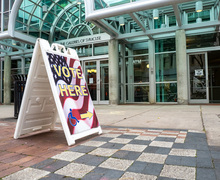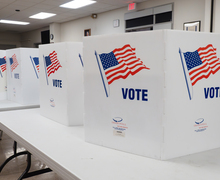Obama puts forth money, plans to create high speed railroads
Throughout the past 50 to 60 years, the United States has seen a decline in rail transportation in favor of airplanes and cars. Because the United States has focused its priorities on other means of transportation, its rail transportation system has lagged compared with those of other countries.
Travel to Asia and Europe and you will notice – air travel is not as important as it is in the United States. Clean, fast and comfortable trains are how people travel. To bring the United States up to speed with other countries, the American Recovery and Reinvestment Act (better known as the stimulus package) has sectioned off $8 billion to build high-speed rail lines, in addition to $1 billion per year for the next five years, which President Barack Obama has promised.
On April 16, 2009, Obama set his vision for high-speed rail: ‘Imagine whisking through towns at speeds over 100 miles an hour, walking only a few steps to public transportation and ending up just blocks from your destination.’ Whether this money will effectively build a high-speed rail system is another matter.
The Federal Railroad Administration claims that the $8 billion will be spent to upgrade ‘existing services to entirely new rail lines exclusively devoted to 150- to 220-mph trains.’ It also states that ‘implementing these corridor projects and programs will serve as a catalyst to promote economic expansion (including new manufacturing jobs), create new choices for travelers in addition to flying or driving, reduce national dependence on oil.’
The FRA provides a detailed list of projects up for construction and explains the cost. Unfortunately, many of the projects are upgrading existing tracks and will not actually build real high-speed rails. Several of the projects call for an upgrade to 110-mph service. This is not nearly enough. Other projects simply increase on-time performance by 10 to 15 percent. If we are to drastically improve our rail system, we need to go beyond these minor fixes.
Our concept of high-speed travel is fairly distorted. The Amtrak Acela, a train that runs between Washington, D.C., and Boston, has an average speed around 80 to 90 miles per hour. France’s TGV travels at an average speed of 170 miles per hour. Other countries have 200 mile per hour averages.
A trip between New York City and Boston should be around an hour or an hour and a half. Instead it takes nearly three and a half hours on the ‘high speed’ Acela. No wonder people would much rather fly, even with the inconveniences of security and being crammed into an airplane.
Driving is also much cheaper in the United States. While the United States panicked in 2008 when gas prices exceeded $4 per gallon, countries with high-speed rail were paying above $6 per gallon.
Many are claiming that funding high-speed rail is a step in the right direction. The $8 billion only partially aids in reaching the overall goal. With the economy as it is, many Americans tend to want to gravitate away from further spending on projects like high-speed rail.
Jeffery Spivak from the American Planning Association Journal cites several changes the United States must make in order to get to the level of transportation found in Europe. Among these changes are long, straight sections of land to build tracks, a reduction on the minimum weight of a locomotive and other route design elements. These changes have only been made in California, yet the estimate for a proposed high-speed line between Los Angeles and San Francisco is $65 million per mile.
Despite the cost, high-speed rail is where more effort should be focused. In Scientific American magazine, Michael Moyer points out that the federal highway system was not a ‘for-profit venture. It did, however, open the landscape to increased movement of people, goods and ideas. Train advocates hope that high-speed rail will do the same.’ Critics believe that highways and airports have already accomplished the goal of connecting the United States and that continuing to build more transportation would be both expensive and redundant.
Between driving and flying, there needs to be a cheaper, less-stressful and faster way to travel within the country. If it is managed correctly, an investment in high-speed rail could seriously be another option. For now, most individuals do not see trains as a reasonable alternative. Maybe it will take $6 per gallon gas to get people to strongly call for high-speed rail. While the stimulus package’s contribution is a good start, it is far from what is really needed.
Harmen Rockler is an undeclared freshman in the College of Arts and Sciences. His column appears bi-weekly, and he can be reached at horockle@syr.edu.
Published on March 2, 2010 at 12:00 pm





